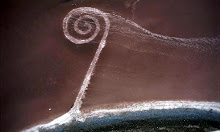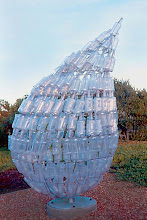An interesting question raised in class today was the idea of whether a piece of art can become site-specific. While looking at Chapter 10: "Good" Versus "Bad" Objecthood: James Welling, Bernd and Hilla Becher, Jeff Wall in Why Photography Matters as Art as Never Before, Fried considers the idea of an object being "grounded." He writes: "The idea seems to be to eliminate any and all surplus of information about the exact circumstances, physical and other, in which a given object is embedded but at the same time to leave no doubt that the object in question, as the Bechers put it, is not moveable like a cup or a sewing machine but rather is 'strictly connected to the ground'".
The examples of the Statue of Liberty, the triangles outside the Louvre, and the Eiffel Tower were given as pieces that, through history, have become so grounded in their sites that it's difficult to imagine the place without them. Can sites such as these truly be considered site-specific? If not, how do we categorize them?
Subscribe to:
Post Comments (Atom)










No comments:
Post a Comment